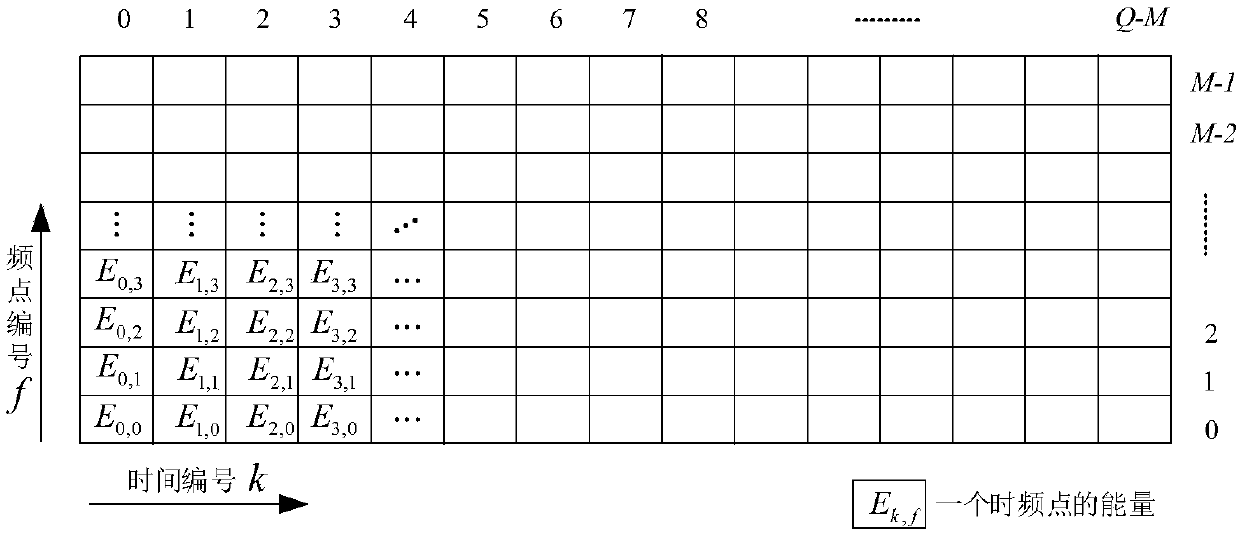Transmitting method and receiving method for constant envelope frame synchronization signal
A technology of frame synchronization signal and receiving method, which is applied in the direction of digital transmission system, electrical components, transmission system, etc., and can solve problems such as inability to combine multiple input and multiple output systems, high peak-to-average power ratio of synchronization signals, and large time overhead.
- Summary
- Abstract
- Description
- Claims
- Application Information
AI Technical Summary
Problems solved by technology
Method used
Image
Examples
Embodiment 1
[0056] Embodiment 1: The generation and synchronization of the frame synchronization signal of the constant envelope of the single-antenna system are as follows:
[0057] Take a {1,-1} sequence with a length of 256, perform MSK modulation on it, set the symbol rate to 4kbit / s, and generate a section of MSK signal. Sampling the MSK signal at a sampling rate of 128kHz to obtain a constant envelope sampling point sequence of 8192 points long At this time M=8192. Will modulated at 1.5kHz to obtain the sequence Will modulated at -1.5kHz to obtain the sequence At this time F=1.5kHz, ΔF=-3kHz. Take ΔN=M+32=8224, that is, stagger seconds in Behind, form a constant envelope frame synchronization signal with a length of 16416 sequence and sequence The 32 sampling points between are set to zero. Will Modulated to carrier F c to send.
[0058] At the receiving end, the sequence Take the conjugate to get the sequence A signal received by the receiver Assume t...
Embodiment 2
[0065] Embodiment 2: The generation of the frame synchronization signal of the constant envelope of the 4x1 antenna system and the embodiment of the synchronization method are as follows:
[0066] Multiple antennas transmit frame synchronization signals, which can improve the anti-fading capability of the frame synchronization method. The four antennas in this example set the same three parameters of ΔF, N, and ΔN, and the F parameters are spaced apart to ensure that the frame synchronization signals of different antennas do not interfere with each other in the spectrum. This method improves the anti-fading ability of time synchronization, but there is a certain degree of ambiguity in frequency synchronization, because when searching for synchronization according to the parameters ΔF, ΔN, since the F parameter has 4 values, there are 4 time-frequency points that may obtain synchronization. The time numbers are the same, but there are 4 frequency numbers. When all the signals p...
Embodiment 3
[0067] Embodiment 3: The embodiment of the generation method of the frame synchronization signal comprising 3 segments is as follows:
[0068] Take a {1,-1} sequence with a length of 256, perform MSK modulation on it, set the symbol rate to 4kbit / s, and generate a section of MSK signal. Sampling the MSK signal at a sampling rate of 128kHz to obtain a constant envelope sampling point sequence of 8192 points long At this time M=8192. Will Modulate on the three frequencies of 1.5kHz, -1.5kHz, and 4.5kHz to obtain three sequences respectively Set these 3 sequences at 0 seconds, Second, Seconds start sending at 3 moments to form a constant envelope frame synchronous sampling signal with a length of 24576 Will Modulated to carrier F c to send.
PUM
 Login to View More
Login to View More Abstract
Description
Claims
Application Information
 Login to View More
Login to View More - Generate Ideas
- Intellectual Property
- Life Sciences
- Materials
- Tech Scout
- Unparalleled Data Quality
- Higher Quality Content
- 60% Fewer Hallucinations
Browse by: Latest US Patents, China's latest patents, Technical Efficacy Thesaurus, Application Domain, Technology Topic, Popular Technical Reports.
© 2025 PatSnap. All rights reserved.Legal|Privacy policy|Modern Slavery Act Transparency Statement|Sitemap|About US| Contact US: help@patsnap.com



